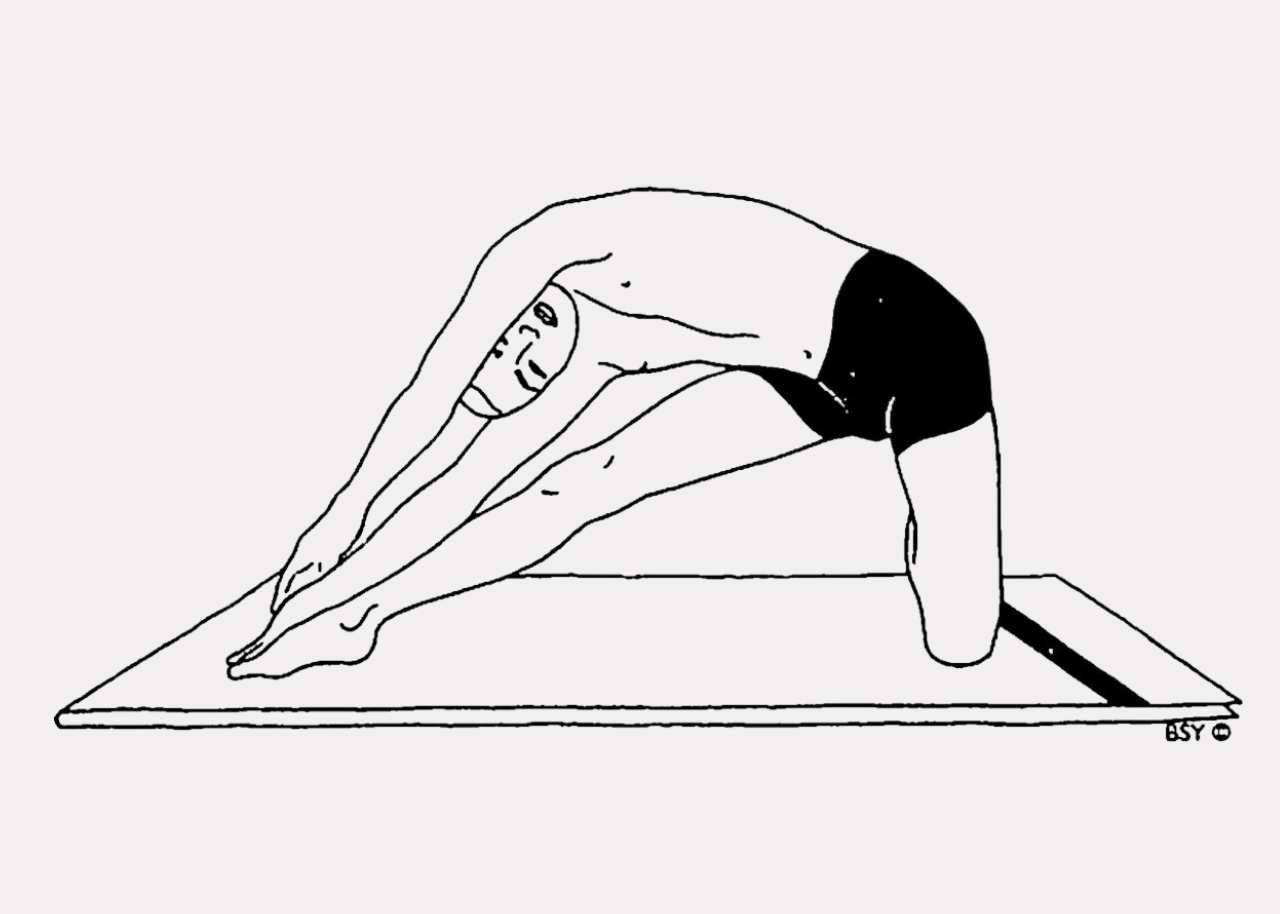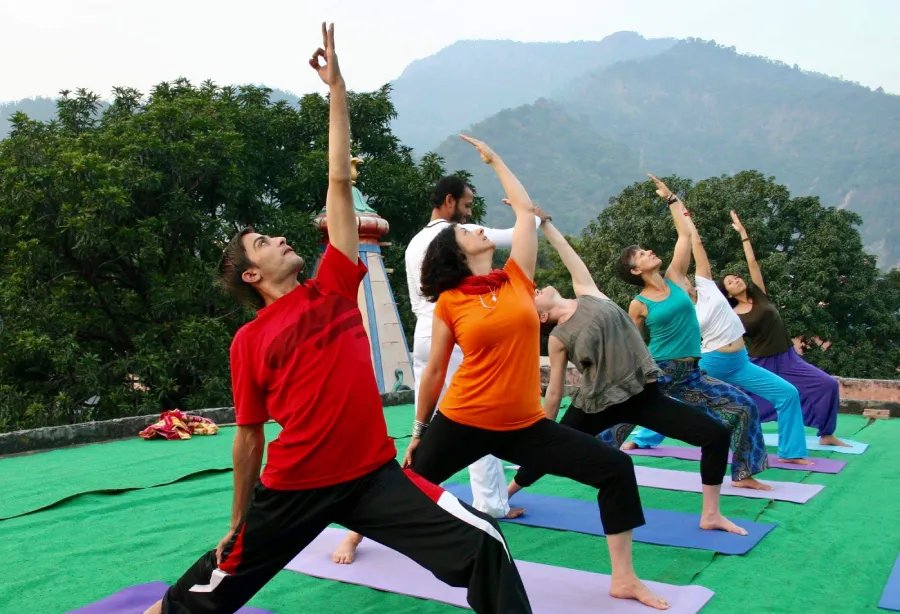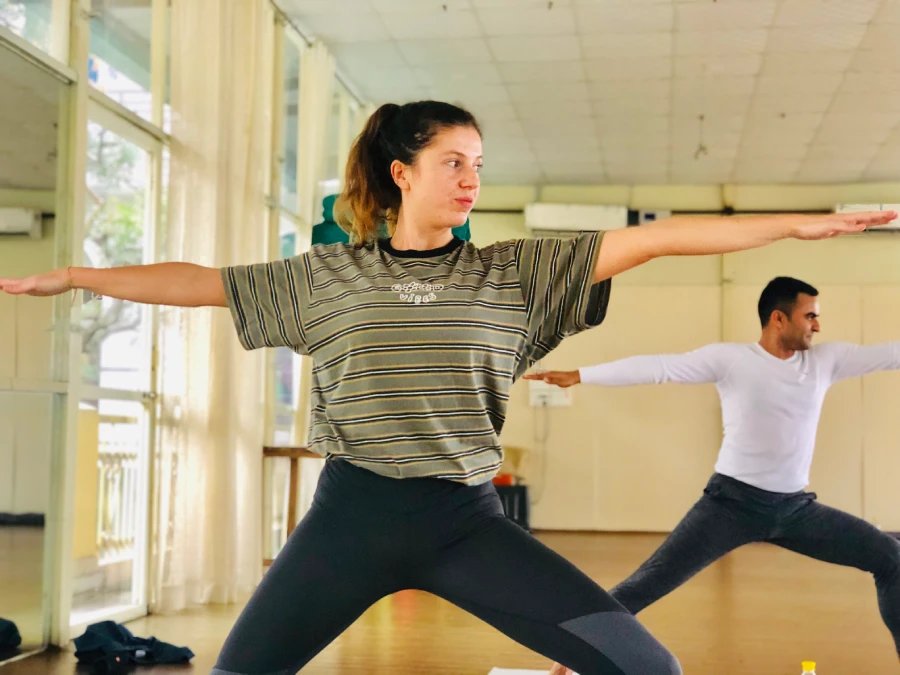The Sanskrit terms “Parigha,” which means an iron bar or beam used to lock gates, and “Asana,” which means stance, are the source of the name Parighasana, also known as the Gate stance. This pose represents the release of the body’s latent potential for strength and flexibility. Parighasana is a special kind of side-bending pose that works on strengthening and stretching many regions of the body at the same time. Here’s a closer look at how to accomplish the posture, its advantages, and the safety measures that need to be taken.
Steps to Perform Parighasana (Beam or cross-bar pose)
Start in a Kneeling Position: Starting on your mat, lower yourself to a kneeling position with your hips exactly above your knees and your thighs parallel to the floor. Maintaining straightness, extend your right leg to the right side. Make sure the toes on your right foot point forward and that your right foot is in line with your left knee.
Inhale and Extend Your Arms: Breathe out slowly and spread your arms shoulder-high, palms down.
Exhale and Bend to the Right: Bend your body slowly to the right as you exhale. Depending on how flexible you are, place your right hand down to rest on your shin, ankle, or the ground outside of your right foot. Line up your left arm with your left shoulder and extend it upward towards the ceiling.
Turn Your Gaze: While keeping your neck in a comfortable position, turn your head to look up at your left hand. Make a straight line with your arms and shoulders.
Hold the Pose: Breathe deeply in and out while holding the pose for a few breaths. Try to deepen the stretch without straining with every inhalation.
Come Up and Repeat on the Opposite Side: out of the pose, take a breath and raise yourself back up to a vertical position with your left arm. Let go and droop your arms. On the other side, repeat the procedure.
Benefits of Parighasana
Improves Flexibility: Enhanced flexibility is achieved by stretching the shoulders, hamstrings, and sides of the body.
Strengthens Muscles: It improves the tone of the thigh muscles as well as the back, shoulders, and arms.
Improves Respiratory Function: By opening up the rib cage, the side stretch promotes deeper breathing and better lung function.
Stimulates Abdominal Organs: Stretching has the ability to stimulate the stomach organs, which can help with digestion and ease mild digestive problems.
Reduces Stress: Paying attention to slow, deep breathing can assist ease tension and promote mental clarity.
Precautions and Contraindications
Shoulder or Neck Issues: People who have injured their shoulders or necks should avoid this position or continue cautiously. If required, use a modified version, maybe not turning the head upward.
Knee Pain: You might want to try supporting your knees with a folded blanket if you have knee discomfort.
Pregnancy: Women should avoid deep side bends or see a doctor before attempting this posture, especially if they are in the second or third trimester of their pregnancy.
Balance Issues: People who struggle with balance should try this pose with their back against a wall for assistance.
With its special combination of strength and flexibility, parighasana provides a technique to release the body’s potential. To guarantee comfort and safety, it’s important to pay attention to your body and adjust the stance as necessary. Whether you’re a novice or an experienced practitioner, adding Parighasana to your practice can make it more balanced and beneficial for your body and mind.
Learn to know more about yoga poses so you can visit best yoga school in rishikesh and join 200 hour yoga teacher training in rishikesh and 300 hour yoga teacher training in rishikesh




